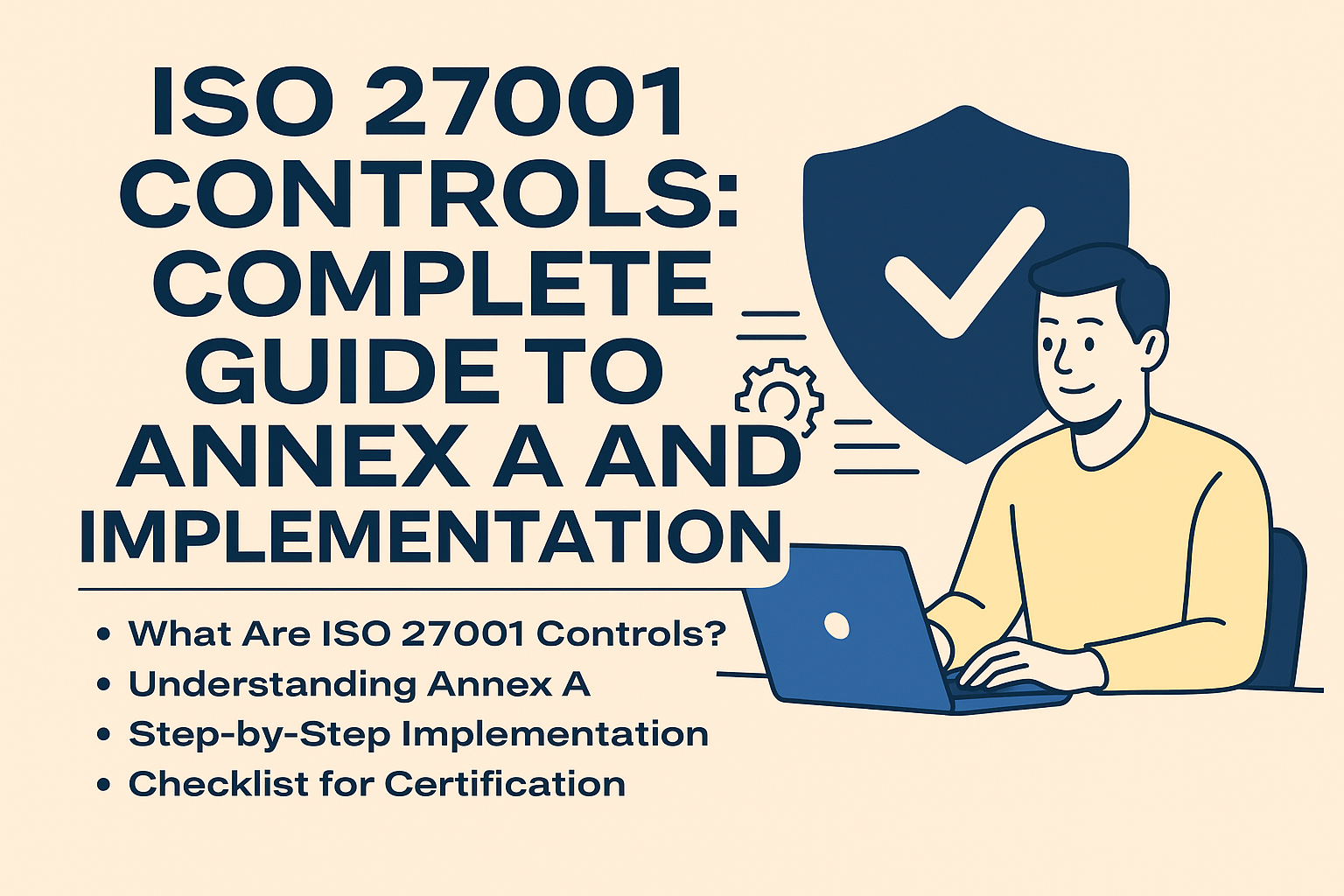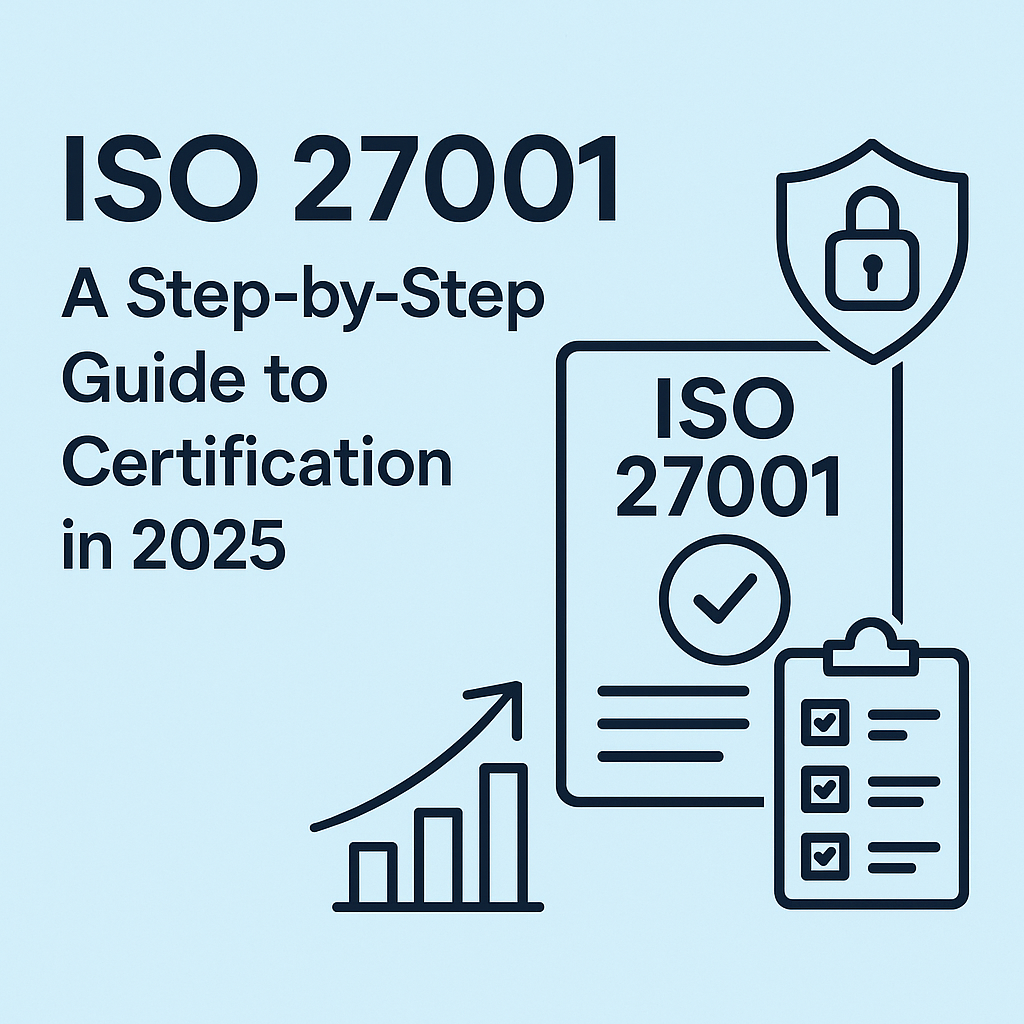ISO 27001 Controls: Complete Guide to Annex A and Implementation

Ever been told you need to implement ISO 27001 controls but had no clue where to start or what that even means?
You’re not alone. I’ve worked with startups, scale-ups, and even some big players — and guess what? Most folks don’t actually know what these controls are or how to apply them. Let’s change that.
What Are ISO 27001 Controls? A Beginner’s Guide
- Reduce risks
- Improve trust
- Support compliance
There are 93 controls grouped into four themes:
- Organizational
- People
- Physical
- Technological
These come from Annex A in ISO/IEC 27001:2022.
Understanding Annex A in ISO 27001:2022
Annex A isn’t your to-do list — it’s a reference. You choose which controls apply based on your risk assessment.
But you still have to:
- Review all 93
- Decide if each one is applicable
- Justify exclusions in your Statement of Applicability (SoA)
The Four Themes of ISO 27001 Controls Explained
1. Organizational Controls
- Info security policies (A.5.1)
- Supplier controls (A.5.29)
- Risk management (A.5.4)
2. People Controls
- Background screening (A.6.1)
- Awareness and training (A.6.3)
- Disciplinary processes (A.6.4)
3. Physical Controls
- Locked server rooms (A.7.1)
- Clear desk policy (A.7.9)
- Equipment disposal (A.7.11)
4. Technological Controls
- Access controls (A.8.2)
- Encryption (A.8.24)
- Logging and monitoring (A.8.15)
New Controls in ISO 27001:2022 – What’s Changed?
- Threat Intelligence (5.7) – proactive threat hunting
- Data Masking (8.11) – protect data in dev/test
- Cloud Services (5.23) – finally gets its own spotlight
How to Implement ISO 27001 Controls Step-by-Step
- Do a risk assessment
- Identify controls that mitigate your risks
- Add them to your SoA
- Document each one (policy, procedure, etc.)
- Train your team
- Track and review regularly
Mapping Controls to Your ISMS: Practical Tips
- Tie each control to a real risk
- Assign clear ownership
- Link controls to measurable KPIs
- Avoid bloat — keep things useful
ISO 27001 Controls Checklist for Certification
- [ ] Risk assessment completed?
- [ ] SoA documented and justified?
- [ ] Policies and procedures in place?
- [ ] Evidence to support implementation?
- [ ] Controls reviewed and monitored?
Common Mistakes in ISO 27001 Control Implementation
- Overcomplicating policies
- Using copy-paste templates
- Ignoring the SoA
- Not linking controls to risks
How to Document ISO 27001 Controls Effectively
- Uses plain language
- Is version-controlled
- Has evidence links
- Can be understood by anyone
ISO 27001 Controls vs. Other Security Frameworks
| Framework | Focus Area | Notes |
|---|---|---|
| ISO 27001 | Risk-based | Global, holistic |
| NIST CSF | Cybersecurity ops | US-based, structured |
| SOC 2 | Trust principles | More tech/startup-specific |
Automating ISO 27001 Controls with Compliance Software
- Monitor controls in real-time
- Assign and track control owners
- Collect evidence automatically
- Be always audit-ready
Control Effectiveness: How to Measure and Improve
- Audit reports
- Self-assessments
- Control metrics (failed logins, patch times)
- Team feedback loops
Case Study: Real ISO 27001 Control Wins
We helped one SaaS team map all 93 controls in under 3 weeks — no chaos, no jargon. They passed their Stage 2 audit with 0 non-conformities and got certified in record time.
FAQs About ISO 27001 Controls
Q: Do I need to implement all 93 controls?
A: No — only what’s relevant to your risks. But review and justify every one.
Q: How often should we review controls?
A: At least once a year. More for high-risk areas.
Q: Can we use Google Workspace or AWS?
A: Yes, just make sure you configure and document everything securely.
What to Expect in an ISO 27001 Audit
- Your SoA
- Sample control walkthroughs
- Evidence (screenshots, policies, logs)
- Signs of ongoing improvement
Keeping Controls Alive: Continuous Improvement
- Set quarterly reviews
- Update SoA as risks change
- Track control KPIs
- Talk to your team often
ISO 27001 controls aren’t just for passing audits — they’re about building a secure, trusted business.


Pingback: ISO 42001 Explained: The New Global Standard for Responsible AI Governance - FlexiComply Compliance Suite